- Home
- /
- Dog Breeds
- /
- French Bulldog- Breed Profile
French Bulldogs, also known as Frenchies were originally bred as companion dogs as they love the company of others and don’t like to be left alone for too long. Ideally they need owners around for as much of the day as possible, due to the fact that they are so people oriented. They can be known to develop separation anxiety, but they are very loving and are well known for being a laid back breed that fits in well with general family life.
French Bulldogs are a good choice for a first time dog owner due to the fact that they are lower maintenance than some other breeds. However, they do have large character and personality and love to receive attention. This breed is actually one of the most popular in the UK despite the fact that they can be expensive to buy as a well bred puppy.
Frenchies are related to the American and English Bulldog, but are smaller in size. They are very playful and can easily adapt to home life. They do, however, crave lots of attention and are very willing to please and spend time with their owners. The breed is also known to be stubborn at times and can be very protective of their owners. They are generally good with children, but like all dogs breeds, they should be supervised and not left alone with young children.
What to expect from our article
Exercise
French Bulldogs only need up to an hour a day of exercise which should be split into multiple shorter walks. In addition to this, they can be exercised at home with activities that can keep both the mind and body active. They are a flat-faced breed and so they can overheat and struggle to breathe quickly, particularly in warmer weather. If such a situation were to occur, it is important to be aware of these signs of heat stroke:
- Excessive panting
- Bright red gums
- Shaking
- Weakness and confusion
- Collapsing
- Seizures
- Vomiting and diarrhea
What is a flat-faced dog breed?
Brachycephalic or ‘flat-faced’ breeds are breeds of dog that have short, squashed noses. These dogs can suffer from a breathing condition called brachycephalic obstructive airway syndrome which means that they can face difficulties getting enough air when they breathe in. This can lead to a lack of oxygen in the blood that can cause heart failure.
Flat-faced breeds can also suffer from other health conditions such as:
- Tooth problems – They naturally have a smaller jaw and their teeth can be cramped together or overlapping which can cause painful complications.
- Eye problems – They also have shallow eye sockets, which can mean that their eyes bulge outward slightly. This makes them more susceptible to eye infections or injuries.
- Skin Infections – The extra folds and wrinkles around the nose and mouth can become a breeding ground for infection.
Grooming
French Bulldogs don’t typically shed their fur too often, so they only need to be brushed around once a week. However, due to the extra rolls of folded skin around their faces, they are at extra risk to skin infections and skin fold dermatitis. It is important to keep their skin folds clean and dry. To do this, you can use damp cotton wool pads, but always make sure to dry the area after cleaning.
This breed also has what is known as ‘deep tail pockets’ that if left dirty, can lead to an infection. To clean under a dog’s tail, you can use a damp cloth to remove any dirt, but again make sure to dry the area after cleaning.
Training and Socialisation
French Bulldogs are both easy to please and very strong willed, so it is important to start their training when they are a puppy so that you can normalise desired behaviour. They are also very sensitive, so it can be beneficial to use lots of positive rewards when they are doing a good job. You should be firm, yet consistent, in their training and you can even take them to training classes if you feel that you need extra help whilst training. The breed is known to try and test the boundaries, so try to set clear guidelines for the behaviour that you expect of them.
Frenchies should be socialised when they are puppies with different people, dogs, sounds, and environments as this will help them to grow their confidence with the unfamiliar. It is recommended to try and have someone present throughout most of the day as they often don’t cope well when left alone for too long. You should avoid leaving your dog alone for more than four hours, but some French Bulldogs can’t cope alone for this long and can develop separation anxiety.
What is separation anxiety?
Separation anxiety is a separation-related behaviour that occurs when the dog is separated from their owner. They can become distressed and behave destructively. Dogs that suffer from separation anxiety show behavioural signs such as:
- Vocalisation – howling, barking, and crying
- Unwanted toileting
- Shaking and pacing
- Excessive drooling
- Vomiting
Common Health Problems
French Bulldog’s have a longer life span that averages between ten and fourteen years when they are properly looked after. However, like other breeds, there are certain health conditions that they are known to be prone to.
Luxating Patellas
The term ‘luxating’ means out of place. A luxating patella is a kneecap that has moved from its normal location and French Bulldogs have a genetic predisposition for this condition. Signs of luxating patellas can include:
- Limping
- Carrying the knee abnormally
- Inability to bend the knee
- Pain when moving legs
- Unable to run or jump
- Swelling
- Weak legs
- Refusing to exercise
When assessed, a patellar luxation will be graded with a number between one and four, depending on the severity. Surgery can be an option to correct the problem and medication can be given for pain relief.
Hyperuricosuria
Hyperuricosuria is a disease where in affected dogs, uric acid does not dissolve efficiently in the urine. The excessive amount of uric acid present forms crystals which lead to stones that may require surgery to remove. The signs of this disease to look out for depend on the area in which the stones end up. A common place for stones to collect is in the bladder. In this case, you may see blood in the urine, difficulty urinating, and frequent amounts of urine.
This condition can only be inherited if the abnormal gene is passed on from both the mother and the father.
Intervertebral Disk Disease
Intervertebral disk disease is the most common spinal disease in dogs. It is an age-related degenerative disease, but it can also affect younger dogs. Disc degeneration results in a diminished shock-absorbing capacity and can lead to spinal cord compression. The most common signs of the disease are pain in the neck and back, hind limb weakness, incontinence, and ultimately, paralysis. It can also be associated with abnormal posture, shivering, panting, and an unwillingness to move.
Characteristics and Temperament
Characteristics – Courageous and funny. Known to have bat-like ears and a short tail.
Temperament – Lively, affectionate, and clever.
Head, Skull, and Facial Features
The head is square in appearance and proportionate to the dog’s size. The skull is nearly flat between the ears and they have a domed forehead. The skin that covers the skull and forehead should be supple enough to allow fine wrinkling when the dog is alert. French Bulldogs also have a well-defined muzzle, and the muscles of the cheeks are well defined.
Their noses are black and wide, whilst relatively short with open nostrils. The lips are thick and black and meet each other in the middle, completely covering the teeth.Their eyes should be dark in colour and matching, whilst rounded in shape. When looking straight forward, they should be showing no white. This breed also has ‘bat-like’ ears of a medium size that are wide at the base, rounded at the top, and parallel. The width of the skull prevents them from being too close together. The opening of the ear canal should be wide and open.
Neck, forequarters, and Body
French Bulldogs should have a powerful and well arched neck of moderate length. Their legs are set wide apart and are straight boned, muscular, and short. The body is also muscular and well rounded. The body is broader at the shoulders, but should narrow slightly beyond the ribs to give definition to the short and thick muscular loin.
Hindquarters, Feet, and Tail
The hind legs are strong and muscular, yet relatively longer than the front legs, with moderate angulation. Their feet are small and compact and are placed in continuation of the line of the leg. The hind feet are slightly longer than the fore feet. Their toes are well-knuckled with short nails. The tail should be undocked, short, and set low, being thick at the root and tapering quickly towards the tip. They should preferably be straight and long enough to cover the anus and should never curl over the back.
Coat and Colour
This breed’s coat should be fine in texture, whilst smooth, short, and close. The only correct colours should be brindle, fawn and pied.
Size
Ideal weight for dogs – 12.5 kgs
Ideal weight for bitches – 11kgs
Is a French Bulldog the right fit for you? if not see our German Shepherd profile to see if they are a better suited to your lifestyle.

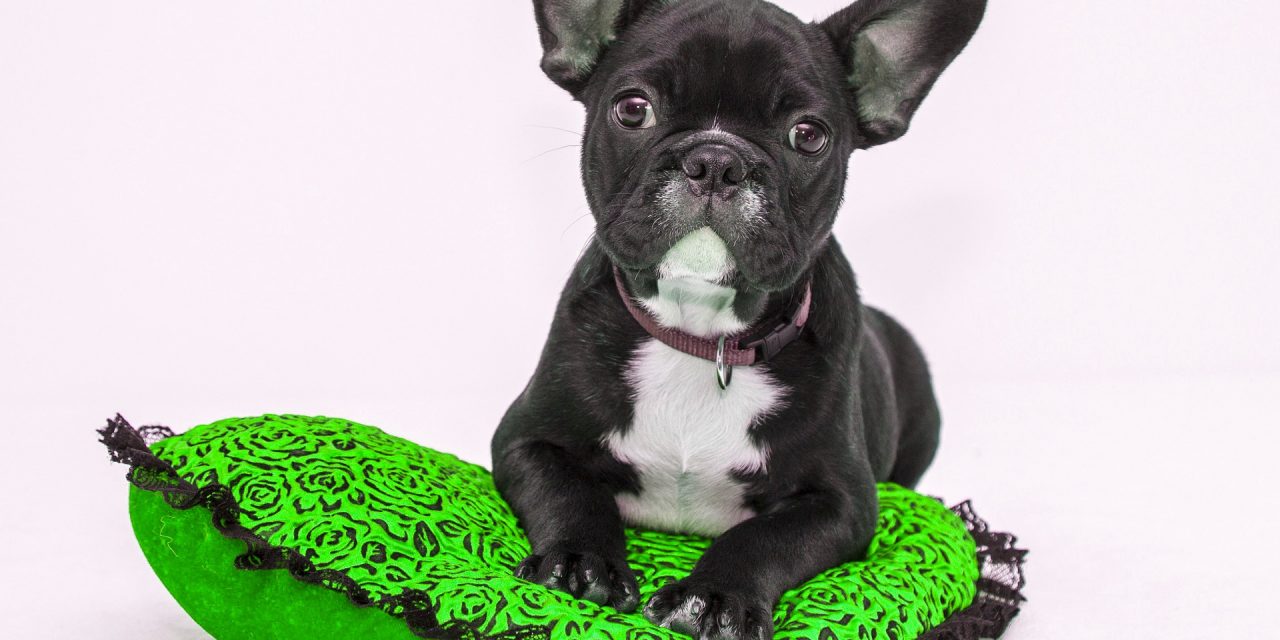
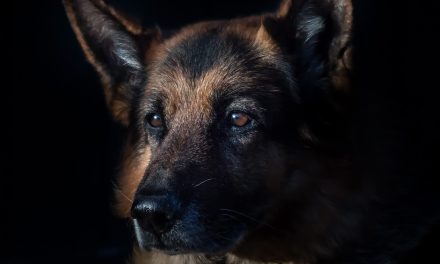
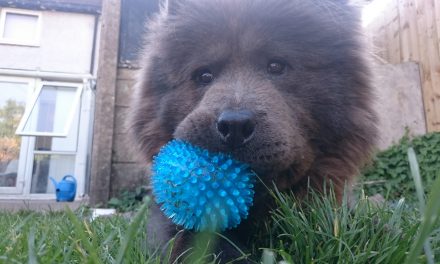
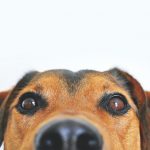

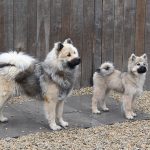
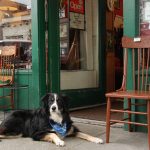
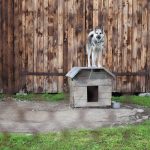
Trackbacks/Pingbacks